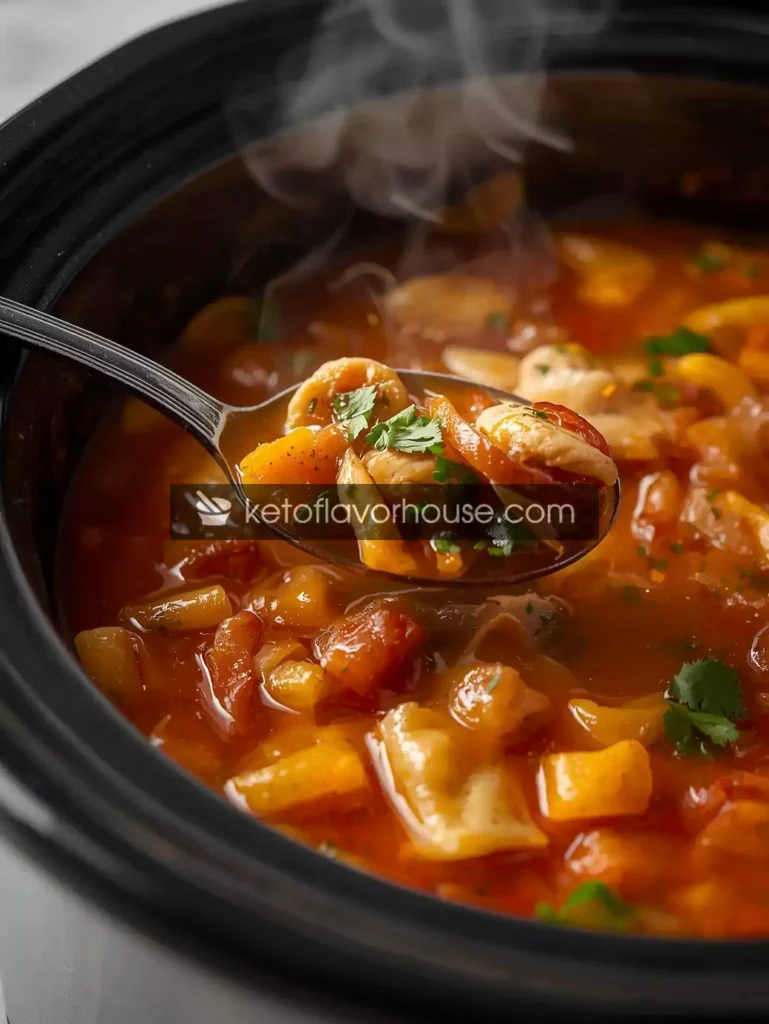This post may contains Amazon affiliate and other affiliate links. If you make a purchase through these links, I may earn a small commission at no extra cost to you. Your support helps me continue to provide quality content. I only recommend products I personally trust and believe will add value to your experience. For more details, please visit my Privacy Policy.
Introduction
There are some mornings when I crave something hearty, flavorful, and completely guilt-free—a meal that energizes me but still fits seamlessly into my post-op bariatric lifestyle. That’s exactly why I developed this Bariatric Asian Chicken Tenderloin recipe. It’s low-carb, packed with protein, and easy to prepare, making it ideal for anyone recovering from bariatric surgery or following a high-protein, post-op diet. The tender chicken absorbs an explosion of Asian-inspired flavors, from soy and ginger to garlic and sesame, all without the heavy oils or sugar-laden sauces that derail a bariatric-friendly eating plan.
What makes this recipe even more special is how versatile it is—you can prep it for lunches, dinners, or even meal-prep containers for the week. The tenderloin cooks quickly, retains its juicy texture, and pairs beautifully with simple sides like sautéed greens or cauliflower rice.
Whether you’re a newly post-op bariatric patient, someone looking for lean protein-packed meals, or simply a chicken lover, this recipe is designed to satisfy your cravings while keeping your nutrition on point.
Why You’ll Love This Recipe
- 🍗 Tender & Juicy: Each bite melts in your mouth.
- 🥬 Low-Carb & Bariatric-Friendly: Perfect for post-op meal plans.
- ⏱️ Quick Prep: Ready in under 30 minutes.
- 🌿 Flavor-Packed: Savory, slightly sweet, and aromatic.
- 👨👩👧 Family-Friendly: Great for everyone at the table without extra sugar.
My Personal Experience
The first time I tried this recipe, I was hesitant. Asian flavors always seemed intimidating post-surgery due to sauces and seasonings that are often sugar-heavy. But after experimenting with a simple marinade of garlic, ginger, soy sauce substitute, and a touch of sesame oil, I realized I could enjoy that bold, savory flavor without compromising my bariatric goals. I remember slicing the tenderloin and tasting the first piece—it was juicy, flavorful, and surprisingly satisfying. That moment inspired me to keep refining it into the perfect post-op, low-carb, high-protein meal.
Required Equipment
Skillet or Non-Stick Pan
A good non-stick skillet ensures your tenderloin sears evenly without sticking, which is important for maintaining the meat’s texture and avoiding excessive oil use.
Cutting Board & Sharp Knife
For safety and precision. Slicing chicken tenderloin evenly ensures even cooking.
Mixing Bowl
Essential for marinating the chicken, allowing the flavors to infuse without adding extra calories or fat.
Measuring Spoons
To maintain accurate portions of low-sodium soy sauce, sesame oil, and spices—keeping the recipe bariatric-friendly.
Tongs or Spatula
For flipping the tenderloin without breaking the delicate meat fibers, preserving juiciness.
Ingredients & Substitutions
- Chicken Tenderloin – 500g
Lean, protein-rich, and easy to chew post-op. Substitution: turkey tenderloin works similarly with slightly less fat. - Low-Sodium Soy Sauce – 2 tbsp
Adds umami without excess sodium. Substitution: coconut aminos for soy-free option. - Garlic – 2 cloves, minced
Aromatic flavor enhancer; anti-inflammatory benefits. Substitution: garlic powder (1 tsp). - Fresh Ginger – 1 tsp, grated
Supports digestion, adds warmth. Substitution: ½ tsp ground ginger. - Sesame Oil – 1 tsp
Provides authentic flavor with minimal fat. Substitution: avocado oil (lightly toasted). - Rice Vinegar – 1 tsp
Adds tanginess to balance flavors. Substitution: apple cider vinegar. - Green Onions – 2, chopped
Garnish and mild flavor boost. Substitution: chives. - Sesame Seeds – 1 tsp, optional
Adds texture and healthy fats. Substitution: skip or use crushed almonds for crunch.
How to Make Bariatric Asian Chicken Tenderloin
Step 1: Marinate the Chicken
In a mixing bowl, combine soy sauce, minced garlic, grated ginger, sesame oil, and rice vinegar. Add the tenderloin and coat evenly. Marinate for at least 15–20 minutes.
Mini Tip: Cover and refrigerate for up to 2 hours for deeper flavor without increasing calories.
Step 2: Heat the Skillet
Preheat a non-stick skillet over medium heat. Lightly mist with cooking spray or a few drops of oil to prevent sticking.
Step 3: Cook the Tenderloin
Place the tenderloin in the skillet and sear for 3–4 minutes per side, or until internal temperature reaches 165°F (74°C). Avoid overcrowding to maintain juiciness.
Mini Tip: Don’t flip too frequently—let it sear properly to lock in juices.
Step 4: Rest & Slice
Transfer to a plate and let it rest for 5 minutes. Slice thinly against the grain for maximum tenderness.
Step 5: Garnish & Serve
Sprinkle with chopped green onions and sesame seeds. Serve immediately with low-carb sides like sautéed bok choy, cauliflower rice, or zucchini noodles.
Common Mistakes to Avoid
- Overcrowding the pan: Leads to steaming instead of searing.
- Skipping the rest: Cutting too early releases juices, leaving chicken dry.
- Too much sauce: Excess liquid increases carbs and may dilute flavor.
Pro Tips for Best Results
- Use room temperature chicken for even cooking.
- Pat tenderloin dry before marinating to allow the marinade to stick better.
- Serve immediately for optimal flavor and texture.
Bariatric Nutrition & Strategy
Chicken tenderloin is lean, high in protein, and easy to chew, making it ideal for post-op bariatric patients. This recipe avoids sugar, refined carbs, and excess fat while delivering bold flavor. Pair it with non-starchy vegetables to maintain satiety and support a balanced, low-carb meal.
Variations You Can Try
- Spicy Asian: Add ½ tsp red chili flakes or a few drops of Sriracha.
- Citrus Twist: Add a few drops of lime juice to the marinade for brightness.
- Herbal Asian: Add chopped cilantro or Thai basil for freshness.
Tips for This Recipe
- Serve in meal-prep containers for easy lunches.
- Pair with a small side of low-carb dipping sauce if desired.
- Swap sesame oil with avocado oil to lower saturated fat content.
Optional Additions
- Sautéed bell peppers or mushrooms can be added to the pan for extra fiber and flavor.
- Sprinkle crushed peanuts (if tolerated) for added crunch and healthy fats.
Serving Ideas
- Weekday Lunch: With a side of cauliflower rice.
- Family Dinner: Pair with zucchini noodles or stir-fried greens.
- Meal Prep: Slice tenderloin and layer with vegetables in containers for 3–4 days.
Storage Recommendations
- Fridge: Store in airtight container up to 3 days.
- Freezer: Freeze cooked tenderloin slices up to 1 month; thaw in refrigerator overnight.
- Reheating: Reheat gently in a skillet over medium heat or microwave covered to retain moisture.
Frequently Asked Questions (FAQ)
Q1: Can I use turkey instead of chicken?
A1: Yes, turkey tenderloin is lean and protein-rich, making it a perfect substitute.
Q2: Can this be frozen?
A2: Absolutely. Freeze cooked slices for up to 1 month.
Q3: Is this safe post-bariatric surgery?
A3: Yes, it’s high in protein, low in carbs, and easy to chew.
Q4: Can I use regular soy sauce?
A4: Low-sodium soy sauce is preferred to maintain bariatric-friendly sodium levels.
Q5: Can I cook this in the oven?
A5: Yes, bake at 375°F (190°C) for 20–25 minutes until fully cooked.
Q6: Can I add sugar or honey for sweetness?
A6: Avoid sugar post-op; small amounts of stevia or monk fruit can be used if desired.
Q7: Are sesame seeds necessary?
A7: They are optional but add healthy fats and texture.
Nutritional Breakdown (Per Serving)
- Calories: 210 kcal
- Protein: 35g
- Fat: 6g
- Total Carbs: 3g
- Fiber: 1g
- Net Carbs: 2g
- Sugar: 1g
- Sodium: 320mg
Recipe Snapshot
- Prep Time: 15 minutes
- Cook Time: 12 minutes
- Total Time: 27 minutes
- Course: Main / Lunch / Dinner
- Cuisine: Asian-Inspired
- Servings: 2–3
- Calories per Serving: 210 kcal

Bariatric High-Protein Asian Chicken Tenderloin Recipe
Ingredients
- 500 g chicken tenderloin
- 2 tbsp low-sodium soy sauce
- 2 cloves garlic minced
- 1 tsp grated fresh ginger
- 1 tsp sesame oil
- 1 tsp rice vinegar
- 2 green onions chopped
- 1 tsp sesame seeds optional
Instructions
- Marinate chicken in soy sauce, garlic, ginger, sesame oil, and rice vinegar for 15–20 minutes.
- Preheat skillet over medium heat; lightly mist with cooking spray.
- Sear tenderloin 3–4 minutes per side until internal temp 165°F (74°C).
- Let rest 5 minutes, then slice thinly against the grain.
- Garnish with green onions and sesame seeds. Serve with low-carb sides.









